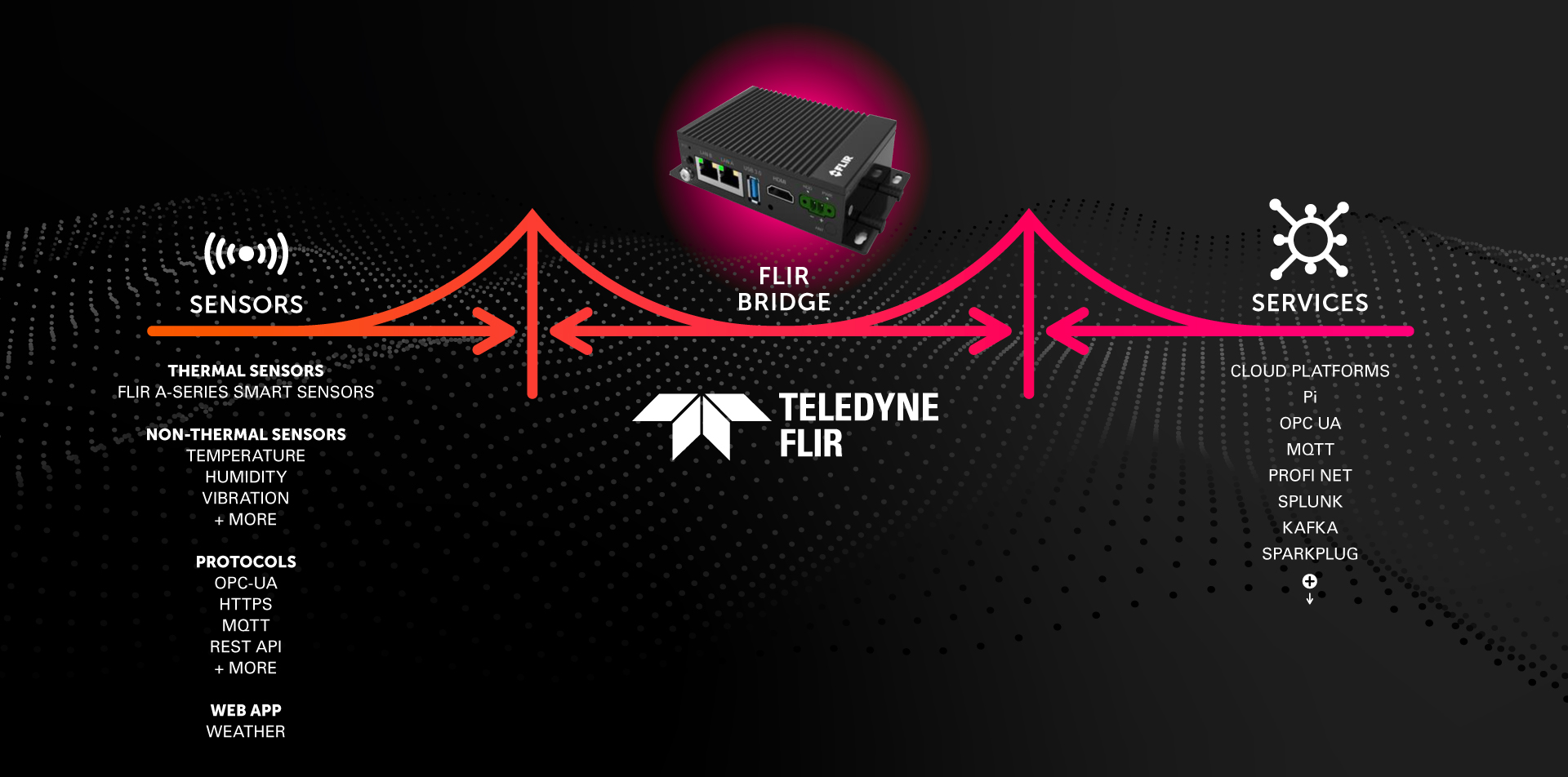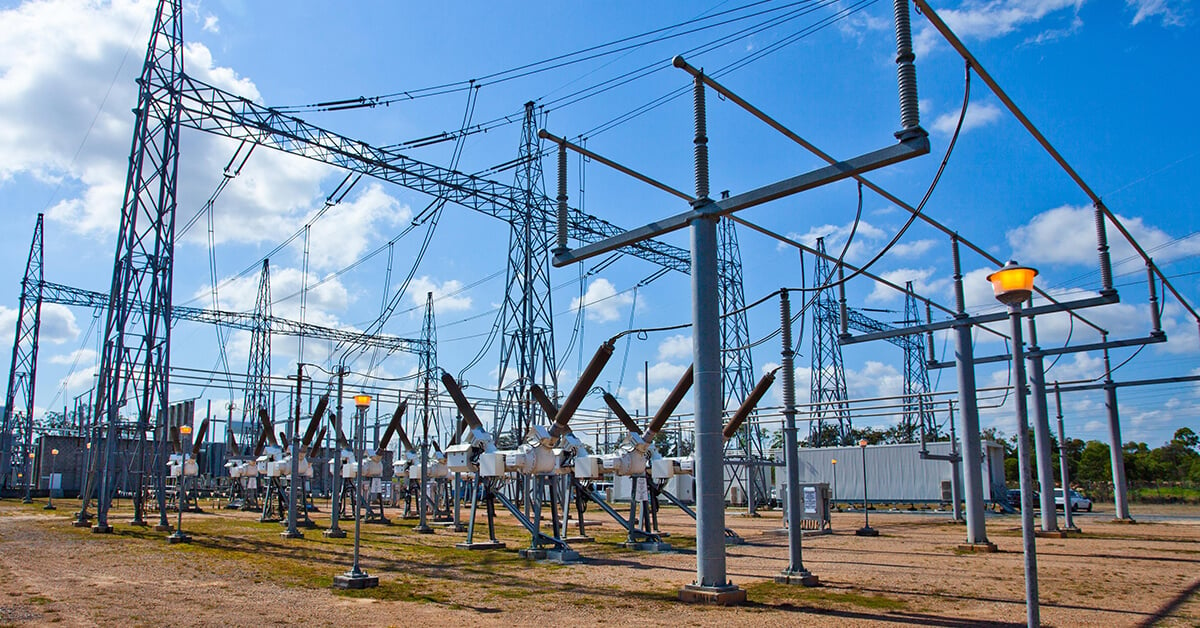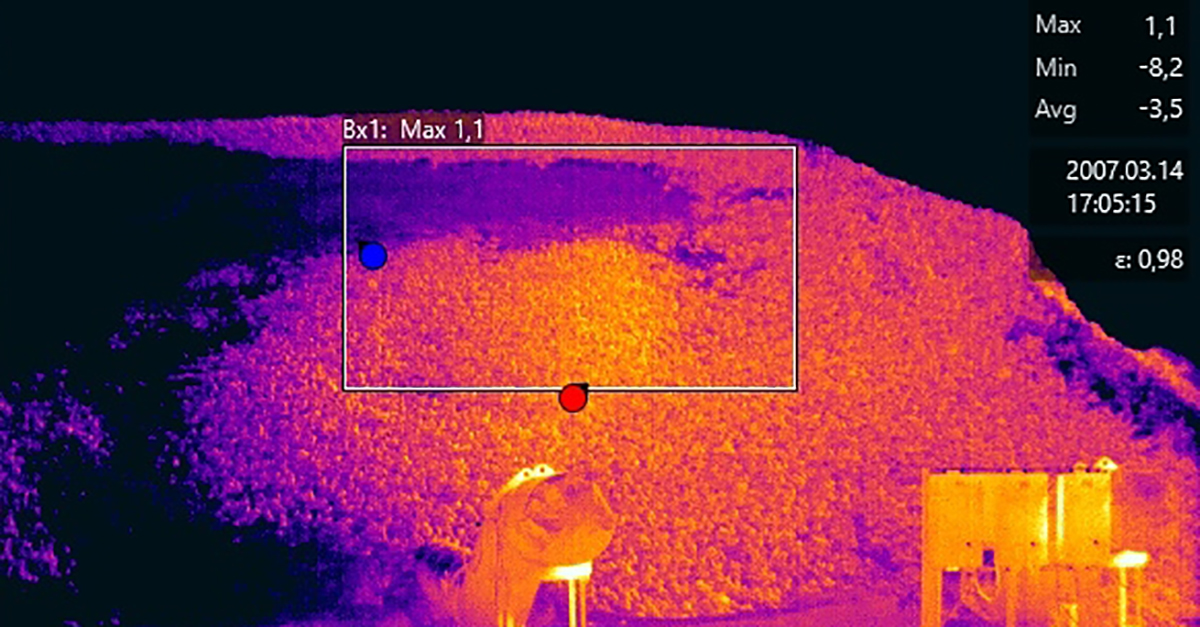Bridging the Gap—Efficiently Integrating Sensors into Asset Health Software for the Electric Utility Market
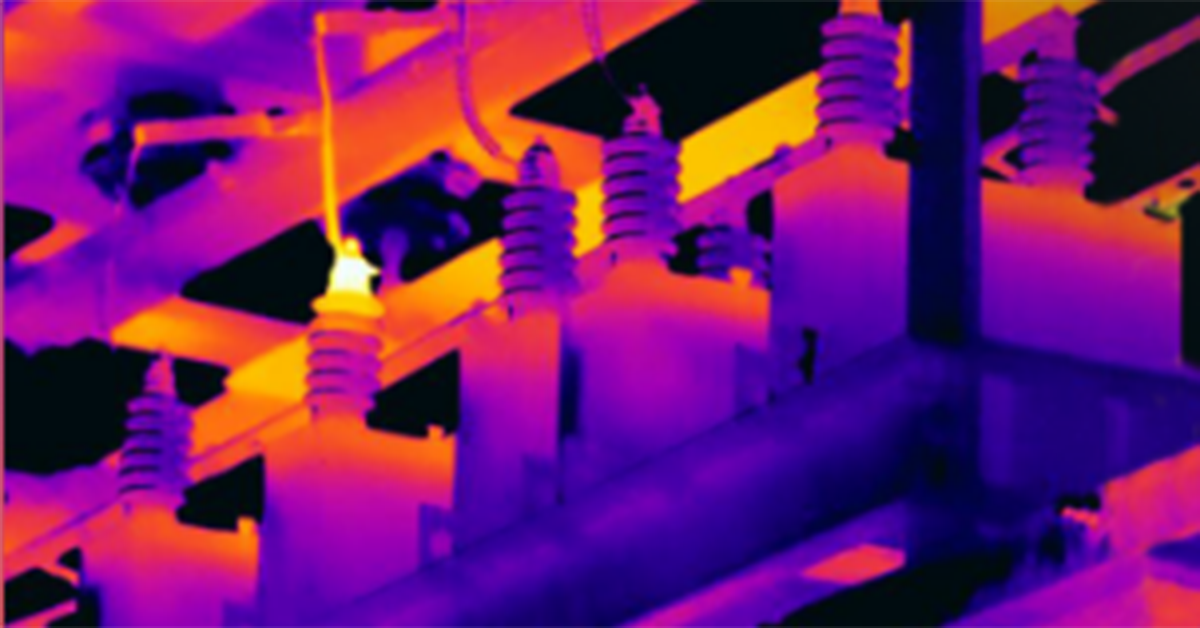
Electric utility companies recognize the value of sensors and the data they provide for reliable and cost-effective service. The benefits of condition monitoring sensors are well established in terms of helping to provide the data needed for pro-active maintenance, but many utilities do not have such systems installed on 100% of their equipment.
Electric utilities can solve the issues of sensor-system incompatibility and lack of skilled IIoT programmers with a condition monitoring solution that makes integration of different sensors easy, with no coding required. It can connect to any desired system, such as OSI PI Historian and OPC UA, for recording and analyzing time-series data from a variety of sensors. Bridging these sensors with innovative software and hardware resources offers an easy and effective way to aggregate condition data for important assets to improve situational awareness and empower decision support to keep operations running, reduce maintenance costs, and improve productivity, reliability, and safety.
NEEDS AND CHALLENGES FACING ELECTRIC POWER UTILITIES
Electric power utilities have several business imperatives that they must follow:
- Improve safety, security, and reliability
- Integrate new energy sources and consumption models
- Modernize the utility grid
They also face a long list of challenges:
- Integrating with legacy equipment
- Retiring skilled inspectors
- Accessing production assets and data
- Security risks
- Aging infrastructure
- Managing and securing costly silo proprietary applications and networks
- Expertise to manage data, networks, and security
One of the ways electric utilities can address these issues is through the use of an IIoT edge gateway designed especially for industrial environments.
PERIODIC SPOT INSPECTIONS
Given the age of the existing infrastructure, it may be no surprise that a large number of electric utilities have few or no built-in sensors. Inspections are conducted on a periodic basis, typically by internal teams carrying handheld sensors, for routine predictive maintenance. The time frame for such spot inspections varies, but it may only be once or twice a year.
Safety is important for those technicians who are doing inspections with handheld devices. There are few qualified technicians for such inspections, and it can be dangerous walking into high voltage transmission stations.
The inspection teams often use handheld thermal imaging cameras to inspect systems. They record the data during the inspection, and then upload it later for transmission. Once the data has been received and examined, the team will generate an inspection report that can take up to a week depending on the number of systems that were examined.
The following images are examples of problems uncovered during spot inspections using handheld thermal imaging cameras:
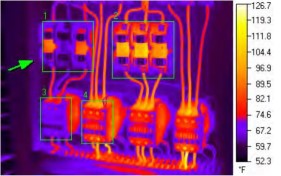
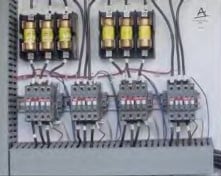
Blown fuse (second from left) (Ref: Inframation Conference Archives – Infrared Training Center (ITC))
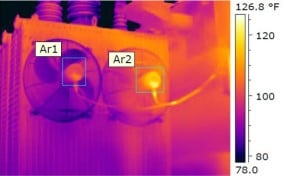
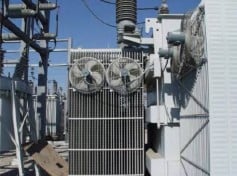
Bad transformer fan (AR2) (Ref: Inframation Conference Archives – Infrared Training Center (ITC))
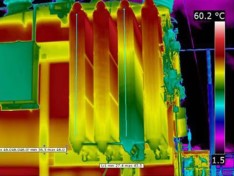
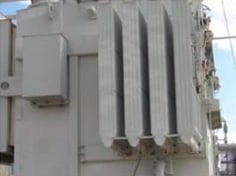
Closed radiator flapper valve (Ref: FLIR)
Early fault detection during routine periodic inspections will result in time savings and reduced maintenance and repair costs, especially if they prevent unexpected downtime. Finding and repairing such issues improves the reliability and dependability of electric service.
The cost benefits of identifying and fixing faults before they become failures are illustrated in the following example. The image on the right shows a failed voltage transformer inside a circuit breaker. Had a thermal imaging camera been used to inspect the transformer before failure, the repair cost would have been limited to replacing the transformer, with one day of downtime. However, the actual failure resulted in the cost of replacing the transformer and the circuit breaker, as well as additional labor and site construction costs, with an eight day outage. This case illustrates that failures can, and will, occur between scheduled tests.
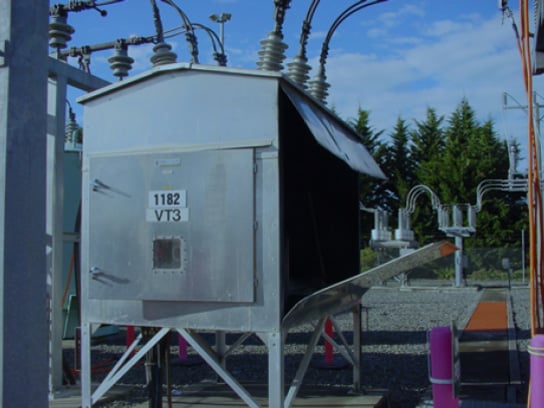
Circuit breaker with panels blown off
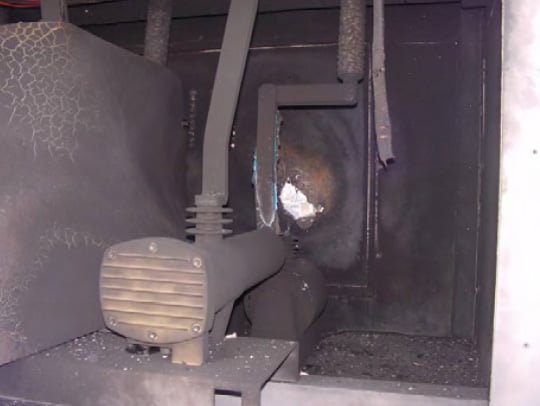
Failed voltage transformer inside circuit breaker
Depending on the results and reports from spot inspections, the severity of the issues or events identified may be categorized as follows:
- Critical – requires immediate attention with the option of taking equipment out of service
- Serious – evaluate as soon as possible and increase inspection frequency
- Intermediate – continue existing frequency of inspections
Periodic spot checking with handheld sensors enables issues to develop and worsen between inspections. Obviously, the sooner a problem is detected and reported, the sooner repair work can begin to avoid unscheduled outages. Increasing the frequency of the periodic inspections will reduce the window of opportunity for failure to occur, but the potential for catastrophic failures still exists.
CONDITION MONITORING
The most effective way to shorten the time between the onset of a problem and discovering it is to install fixed sensors that are continually running. Installing thermal condition monitoring cameras that run continuously generates data on temperature, for example, to be recorded on an ongoing basis rather than as periodic snapshots in time. Examination and review of the reported data would allow the utility operator to become aware of issues and potential failures before the next spot inspection would reveal them.
Condition monitoring provides several advantages over periodic spot inspections:
- Allows the utility operator to find problems sooner and respond more quickly
- Improves situational awareness and allows utilities to be proactive on repairs, maintaining equipment before a situation becomes catastrophic
- Enables predictive maintenance which preserves productivity and scheduling integrity
- Results in less downtime and fewer power outages
- Saves money; it costs substantially less to fix most problems before a failure occurs (it’s estimated that, for utilities, repair costs are only about 1-2% of the total cost of failure)
Condition monitoring thermal camera sensors offer multiple benefits:
- Efficient and safe method of measurement
- Wide area, non-contact, multi-component, accurate and highly secure temperature measurement
- Data and images transmitted in real time, not hours or days
However, outfitting an aging infrastructure with such sensors is only part of the problem facing the electric utility industry. Access to and integration of the data is a major challenge. The sensors must interface with software on a computer network to extract and analyze the gathered data.
Connecting the sensors to systems such as OSI PI Historian or OPC UA allows the utility to have access to the time-series data that was recorded. Utilities may not have enough employees with this particular skill set, and therefore need to bring in technical consultants.
Installation of smart sensors, which interpret and analyze data, provides electric utilities with more advanced condition monitoring data. Smart sensors enable the user to monitor the condition of electrical devices, motors, or substations at all times. They do not need to wait for data to be interpreted; sensors can trigger an alarm, sound a bell or horn, or initiate a shutdown process. Such condition monitoring can capture, process, and analyze data and then act on it.
With an aging, retiring skilled workforce, utilities need systems such as this to provide better insight rather than just gather data, and to further implement automation in data collection and processing to be more profitable.
Currently, smart sensors make up a small portion of the total number of sensors used in the electric utility industry. Relative to thermal imaging, almost all of the cameras are handheld devices used for spot inspections. Despite the advantages of continuous condition monitoring, periodic spot inspections are still the most common form of preventative maintenance. They are relatively inexpensive and are the most cost-effective inspection method for electrical assets below 2.5 kV (Ref: Mission Critical Magazine, 4-16-2021). However, given the aging infrastructure of the electric utilities and the cost of unscheduled outages in terms of customer dissatisfaction and financial penalties, this may change. Using condition monitoring sensors on some of the more critical equipment may make more financial sense.
The impact of using condition monitoring, rather than spot inspections (or time-based preventive maintenance) or run-to-failure (or reactive maintenance), is illustrated in the following figure. With preventive maintenance, the goal is to minimize failures by keeping the equipment in good condition. Preventing failures reduces costs but determining the proper interval for inspections can be difficult. With reactive maintenance, the cost to repair or replace the equipment can be quite high, including possible outage time, but there is no inspection frequency to factor in. Condition monitoring generates data continuously, allowing the operator to watch trends and immediately know about issues with the equipment. It reduces the costs and increases the equipment uptime (Ref: AIChE, CEP, August 2017).
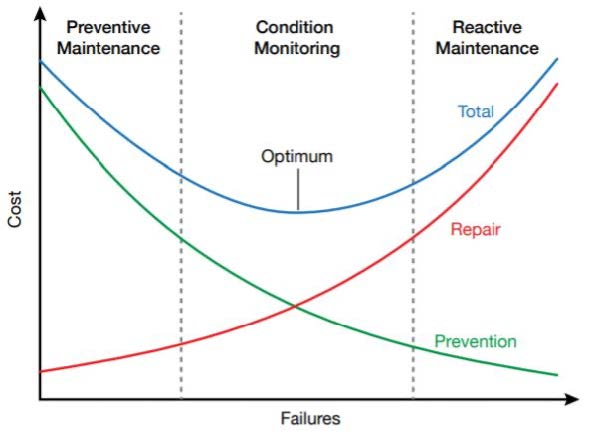
Impact of condition monitoring on maintenance and repair costs
USING SENSORS IN ELECTRIC UTILITIES
Thermal imaging cameras can detect very small differences in temperature by collecting infrared radiation and then create an electronic image using different colors to show these temperature differences. Some examples of thermal imaging have already been discussed. In addition, these sensors can be used to look for loose or corroding electrical connections, voltage leakages, etc. As the resistance builds up, the heat builds up, and accelerated wear at the connection point can cause damage to the equipment. IR sensors can reveal poor insulation within structures, leading to wasted heating in cold weather and extra AC costs in hot weather.
Dissolved Gas Analysis (DGA) sensors are used to monitor the operational condition of electrical transformers by examining oil contaminants through gas chromatography. Insulating materials release gases as they break down over time, so the composition and distribution indicate the level and severity of the situation. DGA should be part of a preventive maintenance program to determine pending faults and to avoid failures in power transformers.
Vibration sensors, also called piezoelectric sensors or accelerometers, measure the amount and frequency of vibration in a given system. They look for changes that indicate conditions that might lead to failure in machinery (such as bearings or gear boxes that are beginning to fail).
Current sensors (also known as current transformers or CTs) are used to check the flow of electrical current in a wire or system, to recognize if the current is too high or too low, and to trigger control systems or alarms as needed.
Voltage sensors are used to monitor or measure voltage supply and calculate power consumption on circuits. They can detect loads and faults, control power demand, and detect power failures.
Ground fault sensors sense low magnitude ground faults (breaks in the low-resistance grounding path from an electrical system, whereby the current may take an alternative path, such as through a human operator). They protect people from serious injury or death, or protect equipment from damage, by triggering an alarm or shutting down the equipment by opening the circuit disconnect.
Weather sensors, such as relative air speed sensors (anemometers) and humidity sensors (hygrometers) also play a role.
Video cameras can provide critical information that is uploaded to computer networks. By aiming a video camera on a particular asset, gauges can be read remotely, and switches can be viewed to confirm they are in the correct open or closed position. Employee safety is improved by reducing the need for physical access to remote facilities while still providing critical data. Motion detection can record damage to systems from environmental factors. Visually examining a problem before arriving at a remote site allows for a more prepared solution to be put in place (Ref: Inframation Conference Archives – Infrared Training Center (ITC)).
As an example, consider the impact that weather can have on electric power grids. By using condition monitoring of the grid, sensors can provide the utility with sufficient information to proactively fix problems before they occur. In this way, the weather is less likely to cause problems and outages because the grid is healthy. While big, powerful storms such as hurricanes can still take down the infrastructure no matter how strong the grid is, condition monitoring can allow the utility to prioritize resources during the repair process. Damage to power station superstructures from storms, wind and debris can be imaged from a distance, to protect the inspectors from possible harm.
Finally, sensors can be used to secure the electrical infrastructure from vandalism. Thermal cameras for security, visual security cameras, fence shaking sensors, radar and other security sensors can be used to warn of unauthorized site access.
Consider the following example, part of the Smart Grid Investment Grant (SGIG) program launched by the U.S. Department of Energy in 2009 (Ref: DOE, Distribution Automation: Results from the SGIG Program, September 2016). For three of the utility companies participating in the grant program that installed smart grids, the percentage improvement in the System Average Interruption Frequency Index (SAIFI) relative to pre-deployment baselines is shown below. Usage of smart sensors reduced the frequency of interruption in electric service.
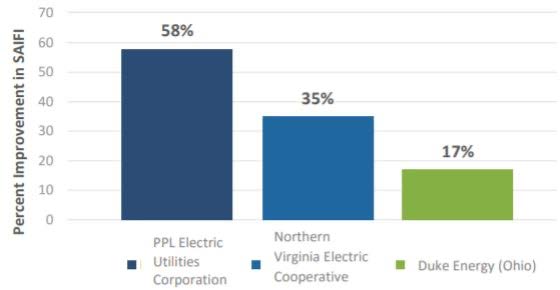
Percent improvement in reduction of service interruptions attributed to smart sensors
A second illustration from the same SGIG program shows the impact of using smart switches and smart meters in the grid. After a windstorm, power was restored to affected customers much more rapidly due to these practices, as shown below. Power was restored almost instantly to nearly half the utility customers, as the smart switches transferred load to unaffected circuits, allowing crews to focus on the other customers and restore their power much more rapidly.
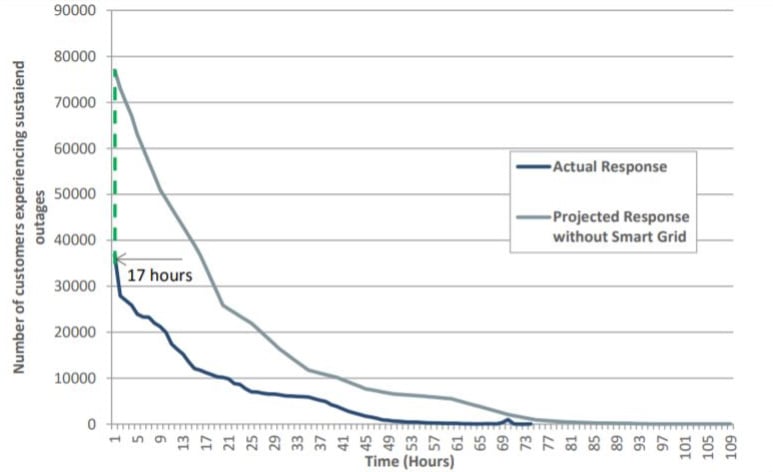
Outage hours avoided by implementing smart technology
HOW DO WE QUICKLY AND EFFICIENTLY BRIDGE THESE SENSORS INTO ONE NETWORK?
If the electric utility is not already using smart sensors and onsite condition monitoring, what issues and impediments are they facing? Perhaps, despite all of its many benefits, condition monitoring is too expensive to implement. They may not be able to justify the additional costs associated with installing smart sensors, integrating them with existing sensors, software and computer networks, and training operators, based on the current available technology.
However, there are new technologies becoming available that address this scenario. Before such action is taken, it is important for utilities to address the following questions:
- Accumulation of data – are we getting the data we need?
- Processing of data – how frequently and how fast are we analyzing the data and acting on it?
- Can we accumulate more data to improve our overall performance, efficiency, productivity, profitability, safety, quality, and dependability?
- If we need more data and more sensors, how can we do it easily? For some electric utilities, the answers might look like this:
- Existing systems can gather data from many different types of sensors, translate that data into a form that is consumable by our asset management system, and provide feedback to local equipment control systems
- Companies are gathering data from equipment into “data lakes” – either on premises or in the cloud
- That data is analyzed using advanced software, which is used to improve performance, lower maintenance costs and reduce capital expenses
The greatest difficulty utilities face is integrating data from multiple sensors (especially those that are not smart sensors) from a variety of vendors into their own software platform.
Several aspects need to be considered in order to bridge these sensors into a single network (Ref: DIANOMIC, Edge 4.0 Features, Function and Business Requirements, 8-02-2021):
- Universal data acquisition – utilities need to acquire data from all assets, regardless of manufacturer, cloud provider, or software toolkits, whether they are existing tools or future purchases
- Universal data integration – they need to accept, filter and process all data sets, no matter the format, for legacy, current and future systems
- Data migration & OT/IT convergence – once the utility has been able to acquire and integrate data successfully, this step has been accomplished, enabling the business to work with data from both legacy and new systems as the systems modernize
- Multi cloud/hybrid cloud/multiple integration methods – the solution must be able to work with all cloud providers, while providing the appropriate security and enabling communication between providers
- Intercloud integration – it must also allow fast and reliable communication between cloud providers and between cloud and on-premises devices
- Multiple data types – the solution must detect, process and integrate different types of time-series data, vibration data, videos, thermal radiometric data, and so on
- Distributed edge based ML/AI life cycles – must be able to collect data of multiple types in parallel, and send it to the appropriate analysis tool No code/low code/source code application development – the solution must accommodate the different skill sets among engineering, operations, maintenance, IT and management, allowing all levels to be able to use the system
- Scale up and scale out management – it must manage different edge applications and configurations, different assets and data sources, while providing control over the system
- No vendor locks – open source provides the ability to communicate across different equipment, clouds and methodologies
ONE SOLUTION IS AVAILABLE TODAY
The FLIR Bridge is an IIoT edge gateway that provides a total solution, connecting third party sensors from different manufacturers to a common industrial network – the first such solution in the industry. The Bridge performs the following tasks:
- Collect
- Transform
- Inform
The Bridge collects data from multiple sensors into a single hub. There are other competitive devices offering edge gateways. However, they only gather data from their own sensors. FLIR’s BRIDGE collects data from both FLIR smart sensor cameras and other types of sensors, and it automatically discovers these sensors/cameras on a shared network.
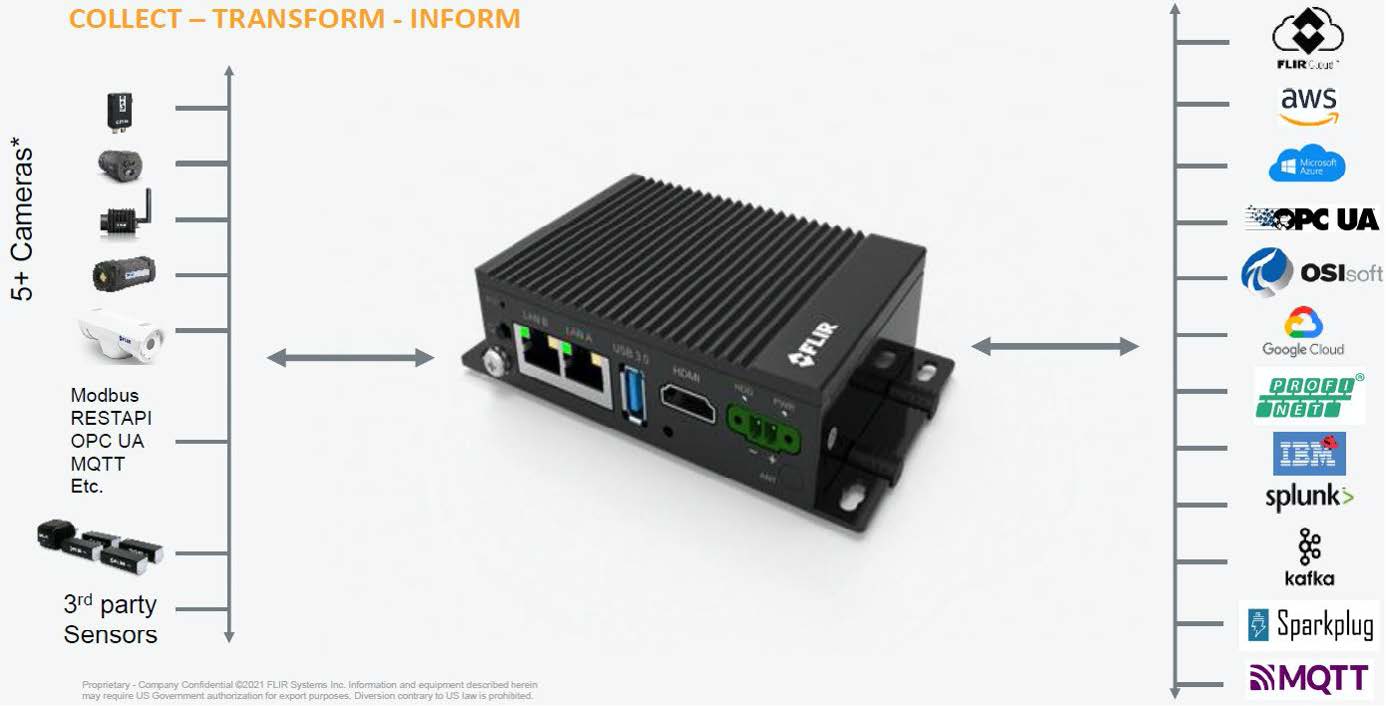
The Bridge transforms incoming sensor data by applying powerful analysis tools to create alarms and alerts at the edge. The analysis tools include built-in software as well as custom code and custom machine learning models. It provides flexible output that includes processed data, raw data, or a combination of both simultaneously.
The Bridge informs by making communication possible between multiple sensors and some 20+ common industrial asset monitoring systems, including industry standard condition monitoring software platforms such as OSI PI Historian and OPC UA. It offers flexible data routing and reporting to optimize decision support, delivering data simultaneously to multiple on-premises and cloud destinations.
The following graphic illustrates the workings of an IIoT edge gateway, collecting data from thermal imaging cameras and other sensors, transforming it by applying analysis tools, and informing the user by communicating the results to a variety of asset monitoring systems.
CONCLUSION
Electric utilities need to keep the power flowing. Disruptions in power have major impacts, both in terms of customer satisfaction and financial penalties. Maintenance of utility equipment is paramount with inspections and monitoring playing a key role. Proactive maintenance results in much less expensive repair costs than waiting for an unexpected failure.
Electric utilities are moving towards monitoring systems with fixed thermal imaging sensors rather than performing periodic spot inspections with handheld cameras. This allows data to flow all the time instead of analyzing a periodic single snapshot.
Utilities need smart thermal imaging cameras and other sensors to continuously monitor for voltage leaks, storm damage, and other disruptors to service. The goal is to help facilities, power stations and sub-stations improve efficiency, optimize performance, and avoid unexpected failures through condition monitoring.
Obtaining reliable data from a variety of sensor types and integrating them into a network securely and easily, without the expense and time of complicated coding, is critical.
A new technology is available that can easily integrate data from any sensor into the utility’s asset management system. It will process data from smart sensors and raw data from “dumb” sensors making communication possible. This edge gateway optimizes decision support by providing real-time data on a continuous basis.
